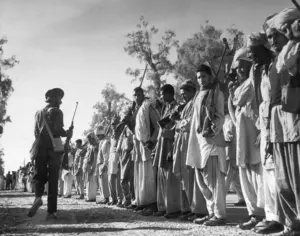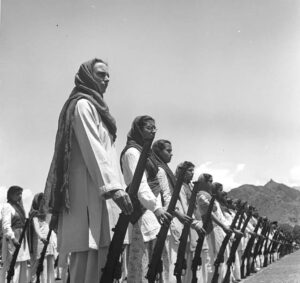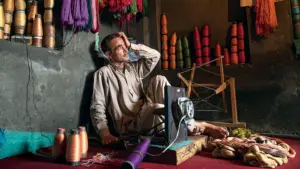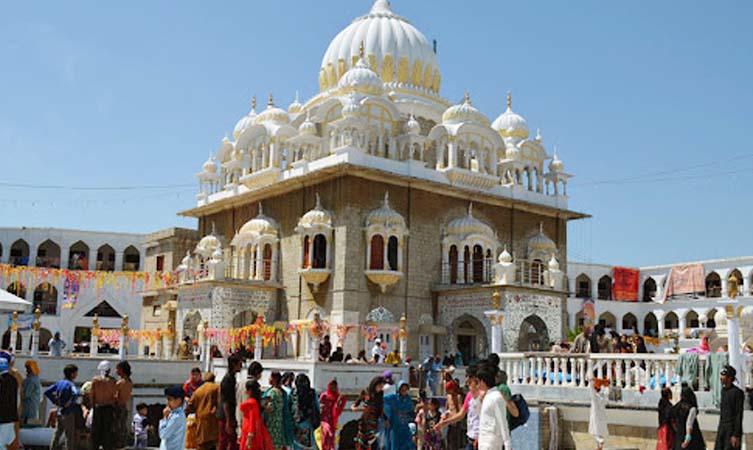Written By: Mantasha Sofi
In the silence of Srinagar’s old quarters, just outside the southern gate of Hari Parbat Fort, stands Gurdwara Chatti Padshahi—not just as a religious edifice, but as a witness to centuries of spiritual endurance and civilisational confluence. This modest yet evocative structure marks the visit of Guru Hargobind Sahib Ji, the sixth Guru of the Sikhs, whose journey to Kashmir in the early 1600s was neither incidental nor missionary, but emblematic of a deeper cosmopolitan impulse that animated the Sikh tradition at its core. In an age now unmoored from memory and besieged by exclusionary certitudes, the existence of Chatti Padshahi is not merely of antiquarian interest—it is a quiet rebuke to the amnesia of pluralism that afflicts the subcontinent.
Guru Hargobind Sahib Ji’s visit to Kashmir must be understood against the backdrop of a century ablaze with political consolidation and metaphysical ferment. The Mughals were tightening the noose of imperial order, while Bhakti, Sufi, and Sikh movements opened up alternative sanctuaries of thought, refuge, and community. Guru Hargobind, who succeeded Guru Arjan after his martyrdom, reoriented the Sikh ethic by embracing both spiritual authority (Piri) and temporal power (Miri)—not as antagonistic but as mutually sustaining. His presence in Kashmir was not expansionist; it was pedagogic. He arrived not to preach, but to converse—with landscapes, with seekers, with silence itself.
In Kashmir, the terrain of religious life was already saturated with overlapping devotions—Shaiva monism, Sufipiety, Vaishnav currents. The Guru’s arrival did not interrupt these, but entered into resonance with them. Nowhere is this resonance more beautifully captured than in the story of Mata Bhag Bhari, a woman whose name does not figure in imperial histories but who resides in the inner archives of Sikh memory. She spun a cloak for the Guru, we are told, out of sheer devotion—so relentlessly that she lost her sight. This was not metaphor; it was devotion lived to the edge of pain. When the Guru arrived, he is said to have pierced the earth with an
arrow, and a spring emerged from the ground. With its water, he anointed her eyes, restoring her vision. You may choose to see it as a miracle or myth, but you cannot deny its ethical force. Here, love is not sentiment; it is labour. And grace is not arbitrary; it is earned in the slow agony of devotion.
The gurdwara that now stands at the site is named ‘Chatti Padshahi’—literally, the Sixth Sovereign. The name is not peculiar to Srinagar; other such gurdwaras across the Indian subcontinent commemorate the same Guru. But the Srinagar Chatti Padshahi carries an effective charge like no other. Here, the shrine breathes in proximity to the Sharika Devi Temple, the nerve centre of Kashmiri Shaivism, and the Makhdoom Sahib shrine, an emblem of Islamic mysticism in the Valley. These three—Sikh, Shaivite, and Sufi—form a trinity of spiritual cartography that has long defined the moral geography of Kashmir. They do not compete. They listen to one another through walls, stones, and rituals. Their adjacency is not merely spatial; it is civilisational.
Architecturally, Chatti Padshahi is neither grand nor ornamental. It stands in deliberate austerity, its wood, brick, and stone speaking in a quiet tongue that resists spectacle. The inner sanctum holds the Guru Granth Sahib, attended by local Sikh families whose ancestors remained rooted here even as history turned against minorities. The langar (community kitchen) continues to serve—without distinction, without sermon. Adjoining the prayer hall is a dharamshala, a rest house for pilgrims. The well, from where Guru Hargobind is believed to have drawn the healing water for Mata Bhag Bhari, is preserved with quiet reverence. Unlike the ceremonial modernity of many gurdwaras in urban centres, this one still carries the fragrance of woodsmoke, humility, and time.
The shrine’s institutional form owes much to the early 19th century, when Kashmir came under the suzerainty of the Sikh Empire. In 1819, following the conquest led by Maharaja Ranjit Singh’s general, Hari Singh Nalwa, efforts were made to restore and consolidate Sikh religious sites across the Valley. It was during this period that Chatti Padshahi assumed its current architectural form. Intriguingly, its first custodian was Pandit Seva Ram, son of Mata Bhag Bhari, who later came to be known as Bhai Seva Ji. A Kashmiri Pandit who bore the mantle of a Sikh
caretaker—his life collapses the dichotomy between religious labels and affirms the Valley’s syncretic fluidity, now nearly extinguished.
The site’s significance lies not merely in its Sikh identity, but in its refusal to capitulate to sectarianism. It belongs to a time when traditions shared space and breath. Its langar is still frequented by Muslims and Hindus. Its caretakers open their doors not as an act of tokenism, but as continuity of an ethic that predates our current polarities. In its festivals—Gurpurabs, kirtans, akhand paths—the gurdwara asserts its vitality not through numbers, but through spirit. It is not the size of the gathering that matters here, but the sanctity of remembrance.
What is remarkable is the resilience of this shrine in an era where resilience itself has become a burden disproportionately borne by minorities. Despite waves of migration, threats to identity, and the slow bureaucratisation of religion, the Sikh families who have remained continue to safeguard this gurdwara—not with noise, but with quiet, almost stubborn fidelity. They have refused to surrender the spiritual grammar passed down to them not just by Gurus, but by ancestors who once understood that Kashmiriyat was not a slogan but a discipline.
In recent years, there has been some effort to include Chatti Padshahi in Kashmir’s religious tourism circuit. These attempts are double-edged. On one hand, they promise visibility to a forgotten monument of India’s spiritual cartography. On the other, they risk reducing it to a brochure item, unmoored from its ethical density. One hopes that those who arrive here do not come merely to photograph, but to witness. For this is not a relic—it is a living grammar of faith, dignity, and dialogue.
To stand before Chatti Padshahi today is to face not just a shrine but a question: can we, in our polarised age, still remember how to inhabit sacred space without suspicion? Can we still recognise devotion without parsing it through identity? This gurdwara does not demand answers. It simply stands—bare, open, enduring. In a time when much of Kashmir’s spiritual plurality has been erased, commodified, or silenced, Chatti Padshahi remains a murmuring witness. It asks us to listen—not only to the hymns sung within its walls, but to the silence it preserves between them.











